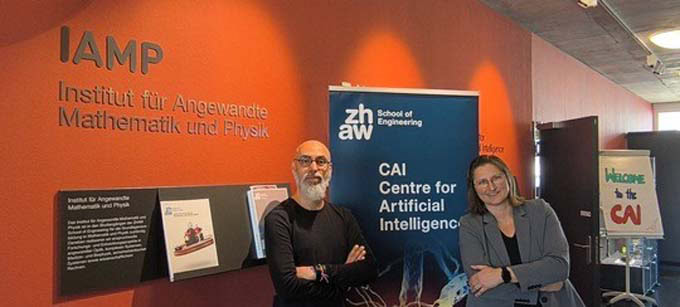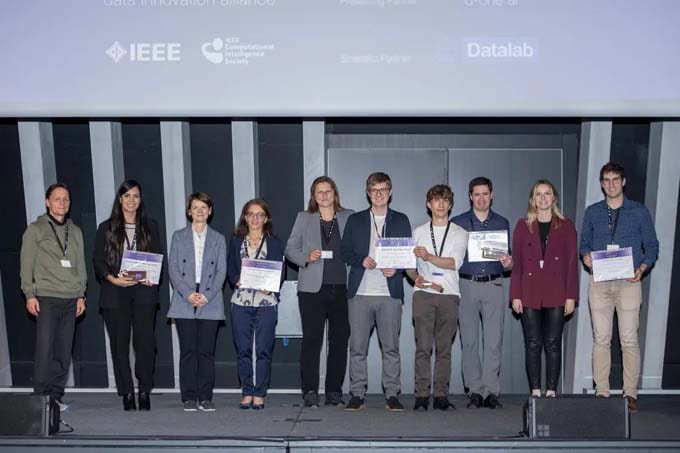ZHAW develops certification scheme for AI systems
In collaboration with CertX AG, a research team from the ZHAW School of Engineering has developed a certification scheme for artificial intelligence that checks the trustworthiness of AI technologies. The "CertAInty" project, which is funded by Innosuisse, thus addresses social risks and the requirements of the EU AI Act, which will also be relevant for Swiss companies in the near future.

Artificial intelligence (AI) is increasingly being used in safety-critical areas, making the trustworthiness of these systems ever more important. Inadequately evaluated AI systems can cause serious social risks - from discriminatory algorithms and physical safety risks to misdiagnosis in a medical context.
Certification scheme as a bridge between technology and regulation
The Centre for Artificial Intelligence (CAI) and the Institute of Applied Mathematics and Physics (IAMP) at the ZHAW School of Engineering are jointly researching this current topic. The result is the "CertAInty" certification scheme, which provides a structured framework for the assessment of AI technologies. "The certification of AI systems by an accredited body increases trust, accelerates acceptance and enables their use in safety-critical applications," explains Ricardo Chavarriaga from the ZHAW School of Engineering. Joanna Weng, who is leading the project together with him, explains: "The CertAInty scheme bridges the gap between the abstract regulatory requirements of the EU AI Act and concrete technical methods for the assessment of AI systems."
Four core aspects of trustworthiness
The certification scheme comprises four central dimensions:
- Reliability: Reliable system performance under different conditions
- Transparency: Traceability of AI decision-making processes
- Autonomy and control: Definition of the degree of human supervision
- Security: Avoidance of undesirable consequences in critical areas of application, for example in healthcare or autonomous transportation systems
For the reliability dimension, for example, an optimized selection was identified and validated from over 55 metrics and 95 methods. "Our certification scheme now offers a practicable methodology and a pragmatic basis for developers, companies and regulatory authorities and the responsible use of AI technologies," explains Joanna Weng.
Practical validation
The applicability of the scheme was demonstrated using several real examples, such as the AI-supported detection of construction vehicles using computer vision. The reliability of AI-supported detection was systematically evaluated against interference factors such as weather influences and image distortions.
The project is of particular importance due to the EU AI Act, which came into force on August 1, 2024 and will be fully applicable from August 2, 2026. This regulation will introduce mandatory certification for high-risk AI systems that covers precisely the dimensions addressed by CertAInty. An extended transition period until August 2, 2027 applies to high-risk AI systems embedded in regulated products. A regulatory regime is also expected in Switzerland in the near future. In addition, Swiss companies that sell their products in the EU must comply with the requirements of the EU AI Act. "The project anticipates the emerging regulatory framework and provides a methodical bridge between the requirements and practical implementation," emphasizes Chavarriaga.
The company CertX now uses the certification scheme as the basis for its services and offers a systematic and independent assessment of AI solutions in Switzerland. The results of the project were also presented at various conferences, including the Swiss Conference on Data Science 2024, where the team from the ZHAW School of Engineering won the Best Paper Award has won.

Being a leader in AI ethics assessment
For interested specialists from industry and academia, the ZHAW is offering the first multi-day course on AI assessment in May in collaboration with the IEEE Standards Association: "IEEE CertifAIEd™ Assessor Training" to.
Source and further information: www.zhaw.ch









